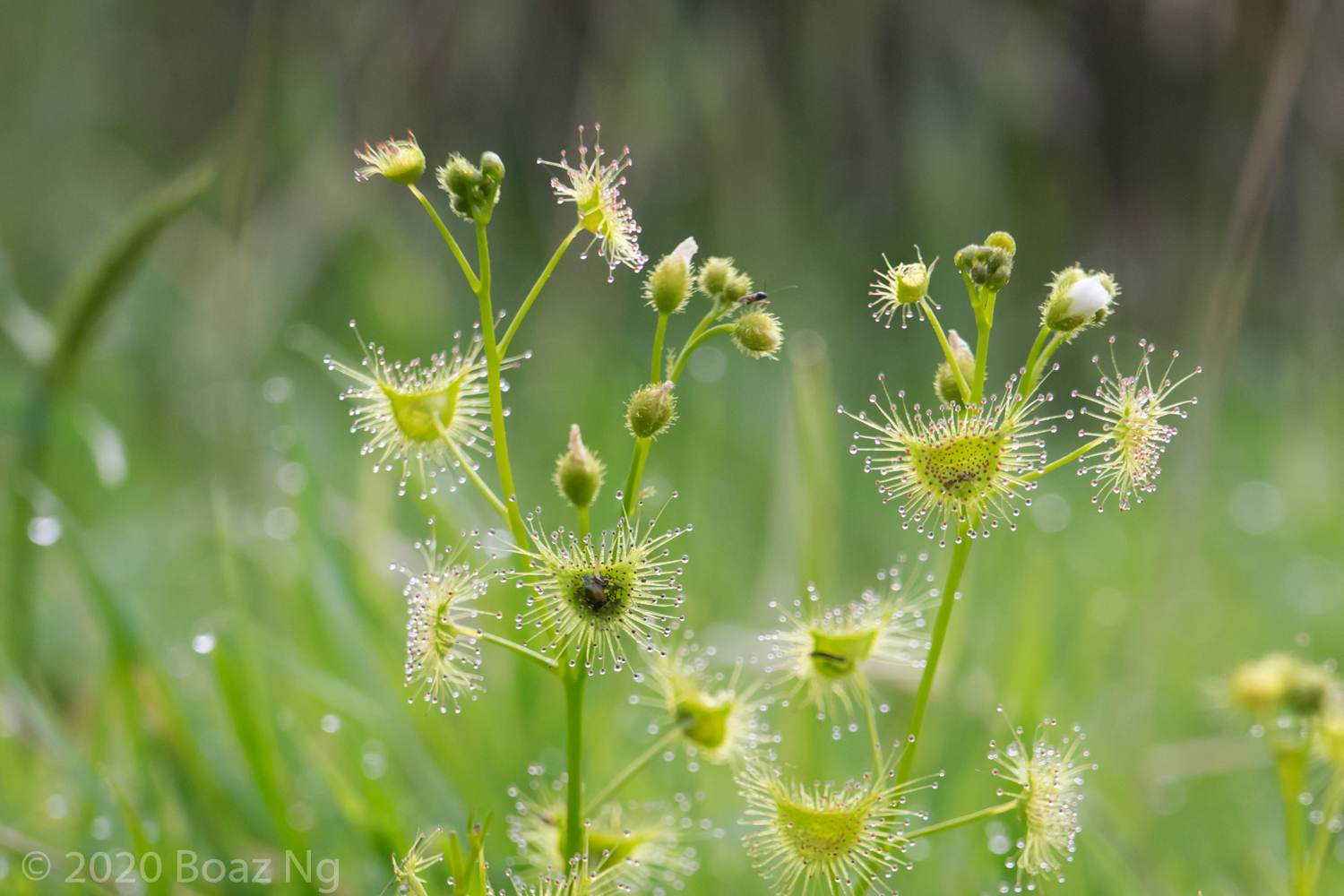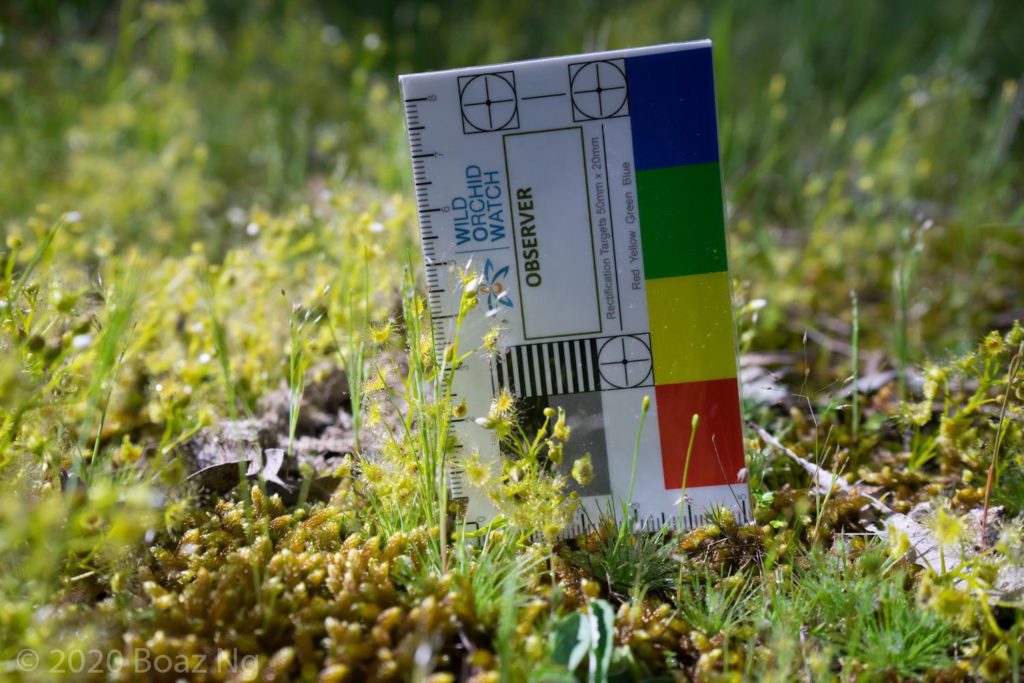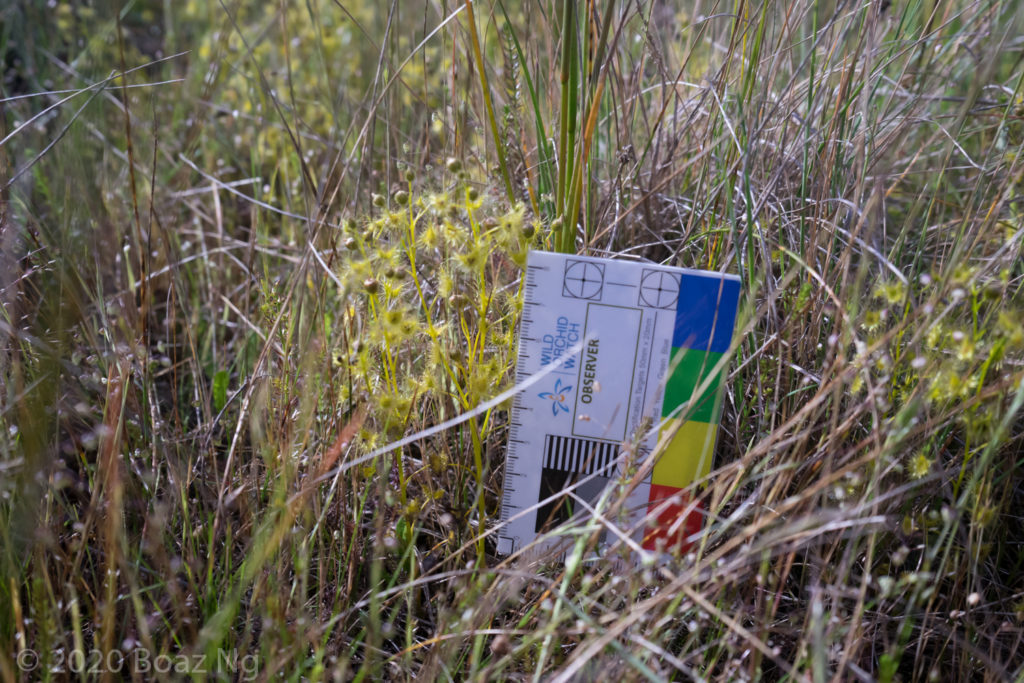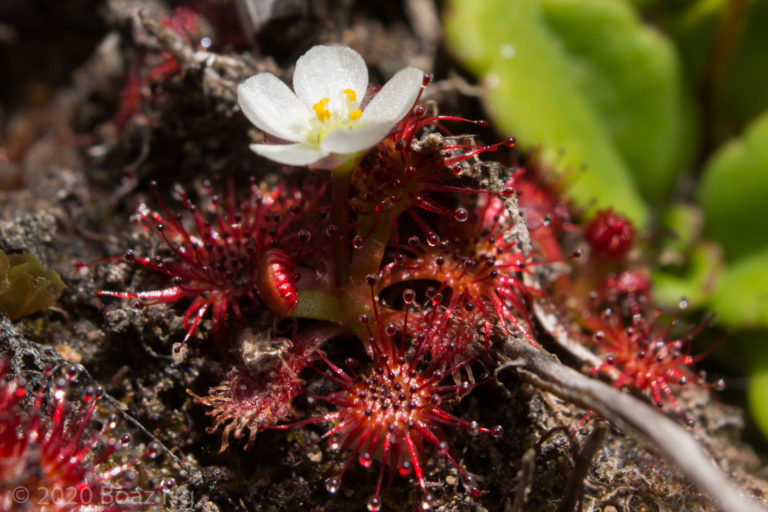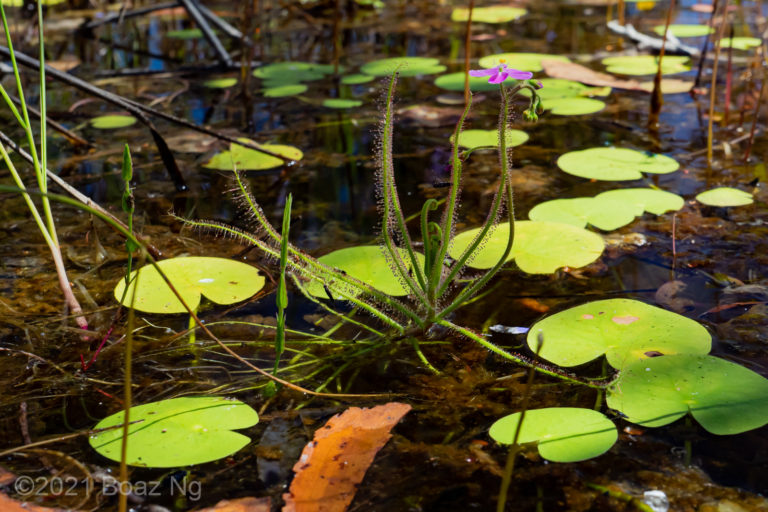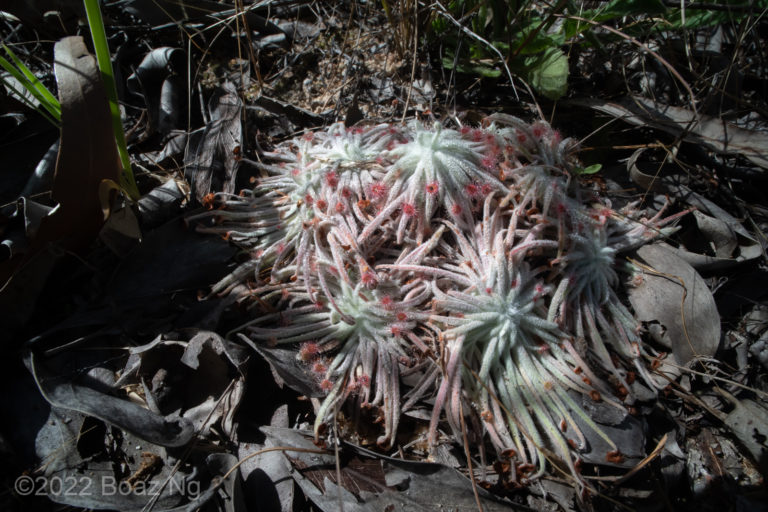Drosera hookeri is an erect tuberous sundew native to east and south-east Australia.


The species is light green in colouration and invariably grows a highly-developed basal rosette when it breaks dormancy. Later in the season, an erect stem emerges. In Victoria, the species is highly branching, with numerous side stems appearing roughly half-way up the main stem. Around Melbourne, many D. hookeri populations attain an extremely short stature of around 5 cm. Taller specimens are common elsewhere in Victoria, growing up to 20 cm in height. At anthesis, the basal rosette has usually rotted away. (I have not observed NSW specimens, which are apparently sometimes single stemmed)
The flowers are white, small and numerous, with several blooms opening on side stems at once. Flowers open only in sunny weather. The sepals are densely hairy and light green. The inflorescence is held close to the highest leaves.


The seed is roughly cylindrical, with a prominent lobed protuberance at one extremity and slightly flattened at the other. The overall shape of the seed is similar to a stubby bottle. The surface texture of the seed is reticulated with deep pit.
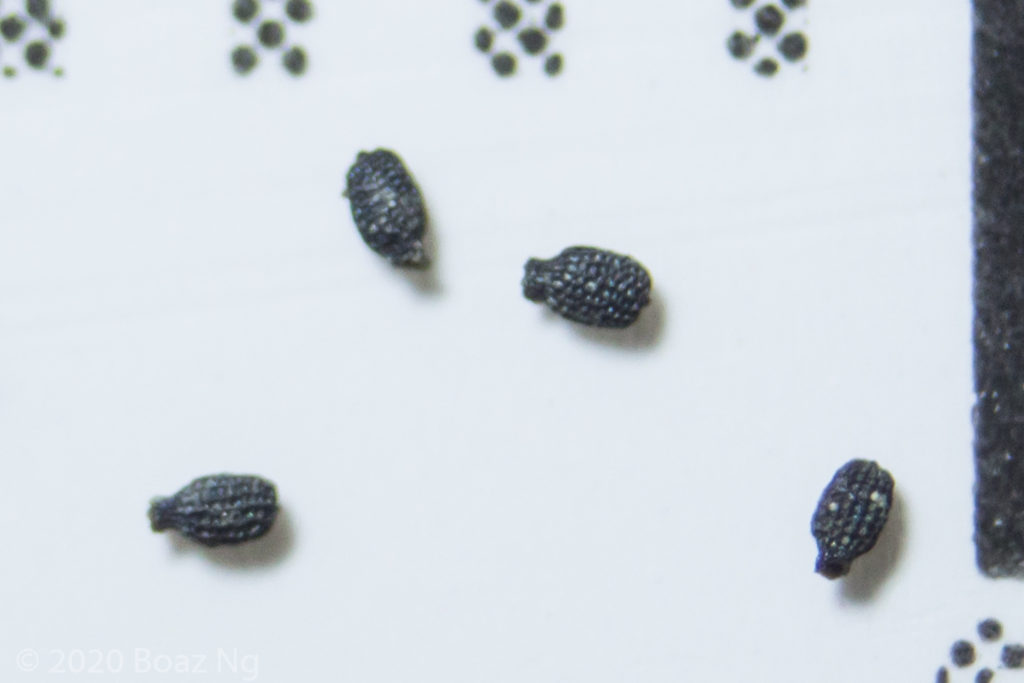
Melbourne 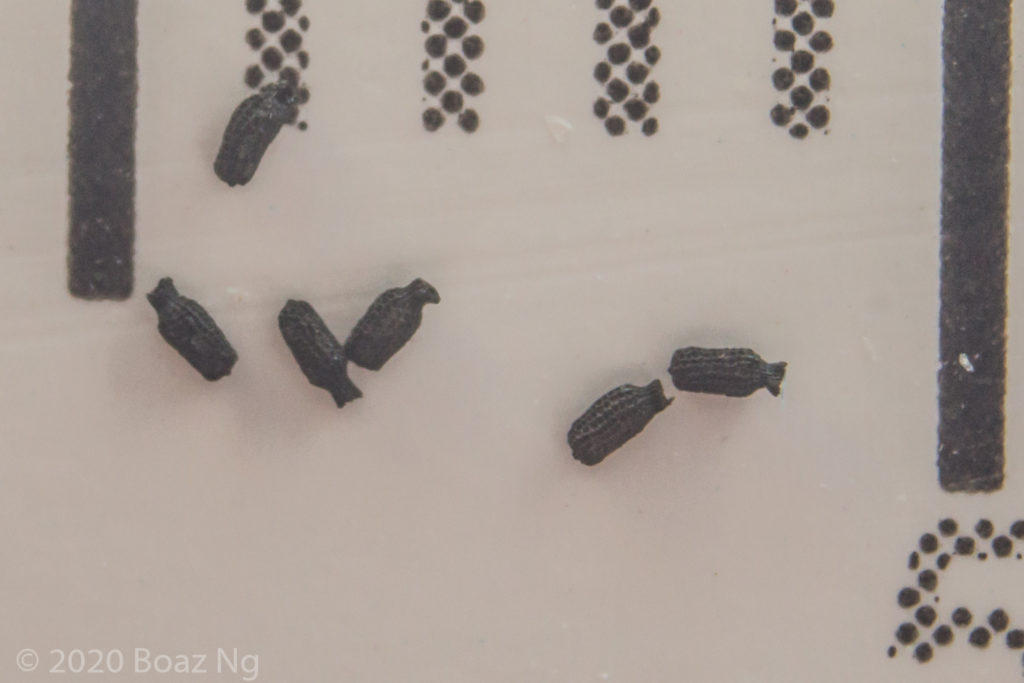
Central Victoria 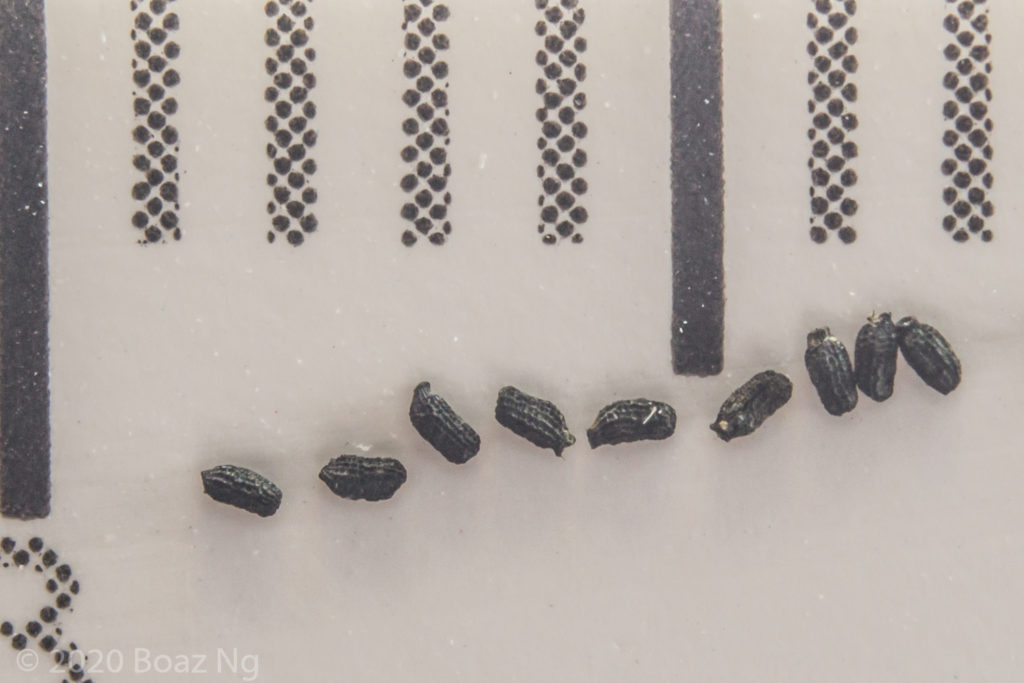
Grampians
Drosera hookeri grows in a range of habitats, but usually either in association with water or grassy lawns. In Western Victoria, I observed it in woodland where it often grew in the same general vicinity as D. gunniana. In these habitats, D. hookeri grew at the edge of swamps whilst D. gunniana grew in flat ground between patches of bush. D. hookeri also grows commonly in winter-wet roadside ditches aside paddocks in the country. In Melbourne, D. hookeri grows in exposed grassy flats in heathland and forest.

Habitat in grassy clearings in Melbourne 
Habitat in a roadside ditch in central Victoria 
Habitat at the edge of a swamp in the Grampians
Drosera hookeri is a member of the complicated D. peltata complex. It is distinguished from other species through its hairy sepals, highly developed basal rosettes and lobed seeds, features also shared by D. gunniana. D. hookeri can be recognised by its light green colouration (D. gunniana is usually olive), small white flowers (those of D. gunniana are larger), and deeply reticulated bottle shaped seed (contrasted with the shallowly pitted, rounded seed of D. gunniana in the profile of a hand grenade).
Click here for side to side comparisons of the two species in Melbourne.

